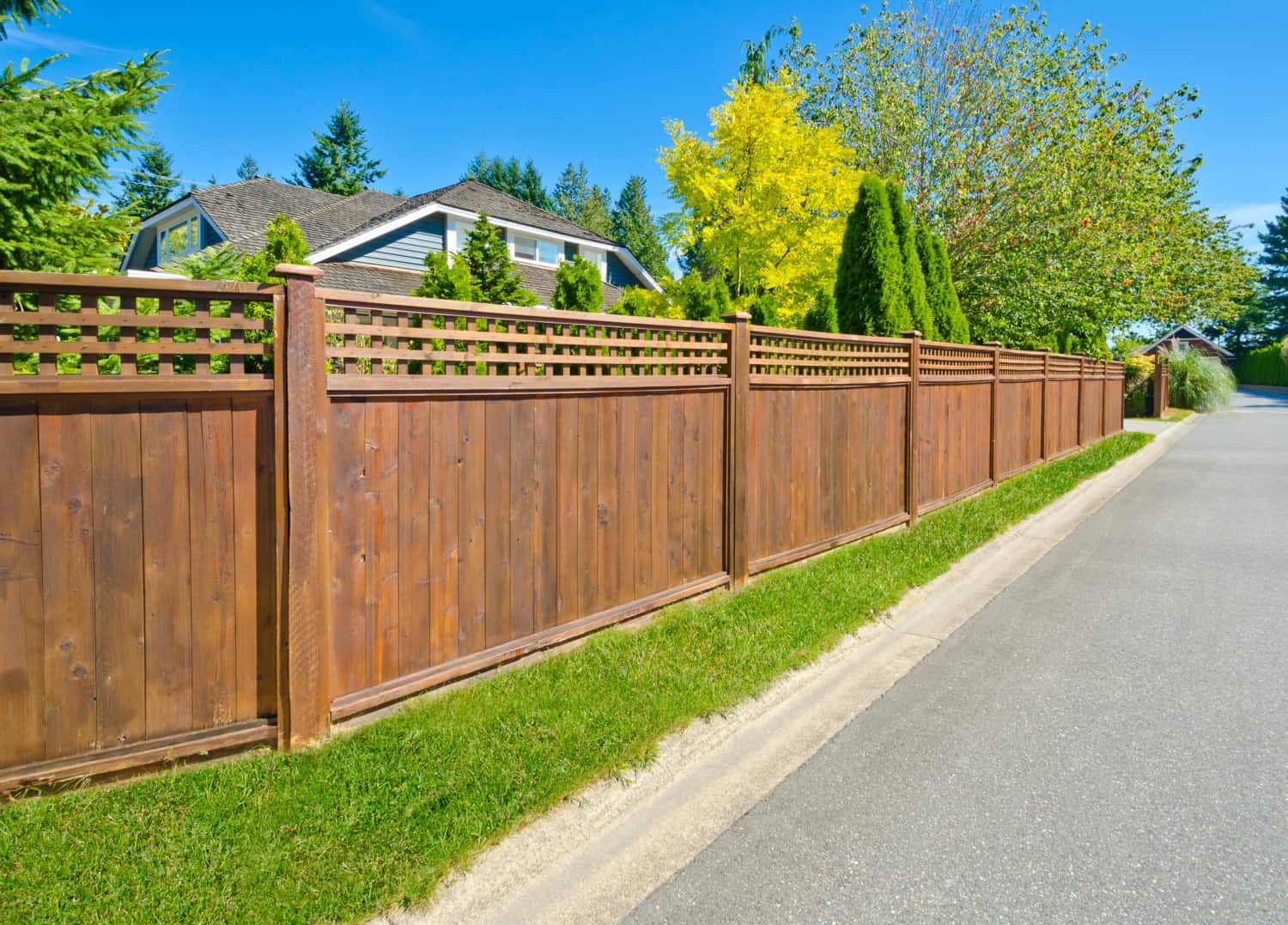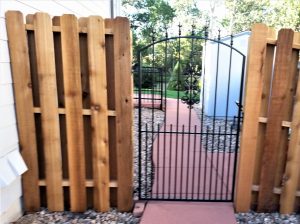All Categories
Featured
Your fencing is subjected to different weather year-round, and while it works as a vital component of your home, it's additionally among the most vulnerable aspects when it involves weather-related damages. Rough winds, heavy rainfall, severe temperature levels, and UV direct exposure can all take a toll on your fencing's integrity, leading to put on and tear. Luckily, there are a few actions you can take to safeguard your fencing and prolong its life-span. Right here are some reliable methods to safeguard your fencing from weather-related damages.
Wood Fences: While timber is a classic option for secure fencing, it is prone to rot, bending, and pest damages, especially in areas with high dampness. Pressure-treated timber or cedar is extra durable, but routine upkeep is necessary to keep it in great condition. Vinyl Fence: Plastic is an exceptional choice for those trying to find a low-maintenance and weather-resistant fence. It's unsusceptible moisture, will not warp or fracture in the heat, and resists fading from UV rays. Steel Fence: Wrought iron and light weight aluminum are long lasting products for secure fencing, however they require a rust-resistant coating to protect them from rust because of wetness. A protective layer or routine upkeep can stop rust and expand the life of metal fences. Composite Fence: Made from a blend of wood fibers and plastic, composite fencings are very immune to weather elements, consisting of uv, heat, and moisture rays. This material offers a balance of resilience and visual appeal. Choosing a material suited to your environment will supply better defense for your fence the long term.
Seal or Tarnish the Wood: Using a high-grade sealant or tarnish to your wood fencing creates a water resistant obstacle that avoids wetness from getting in the wood. It additionally helps secure the timber from UV rays, which can cause staining and drying. Reapply Sealant Consistently: With time, the protective barrier of your sealant or stain can put on down. Relying on your environment, it's a good concept to reapply every one to two years to keep the wood shielded. This treatment will maintain the fencing's look, prevent rot, and prolong its lifespan.
![]()
For added security, take into consideration using wind-resistant mesh displays or panels in areas where wind is a considerable concern. This extra layer can assist lessen the force that the wind puts in on your fencing.
Check Water Drainage: Make certain that the ground around your fence slopes far from the articles. Correct drainage allows water to stream far from the fencing, preventing dampness build-up. Set Up Drain Systems: In locations where drainage is a problem, think about adding a French drainpipe or crushed rock around the base of your fence articles to redirect water away from the framework. Great drainage can protect against rot, rust, and other types of weather-related wear and tear.
![]()
![]()
Concrete Grounds: Establish fence blog posts in concrete to stop them from loosening up with time as a result of dirt erosion or shifting ground. Steel Dental Braces: Including metal braces to fence messages can provide added strength and decrease the danger of breaking or leaning. Strengthening your posts guarantees that your fence will certainly stay in location, also throughout severe weather condition.
For wooden fencings, delicately wash the surface area with a mild cleaning agent to remove dust and crud. For vinyl fences, utilize a soft fabric and cleansing option to avoid buildup. For metal fencings, inspect for corrosion and sand it off before applying a fresh layer of paint. Final thought. Your fence is a vital feature of your building, and with the right treatment, it can endure the obstacles positioned by the weather. By picking resilient products, carrying out normal maintenance, and enhancing weak points, you can protect your fence from the elements and expand its life. Normal assessments, applying protective coatings, and taking actions to manage dampness and wind direct exposure will certainly aid guarantee that your fencing continues to be strong, practical, and attractive for years ahead.
- Select Weather-Resistant Products. The materials you choose for your fence can have a major influence on its capability to stand up to the aspects. Various products are better geared up to handle specific weather. Below's a break down of how various products hold up against the climate:
Wood Fences: While timber is a classic option for secure fencing, it is prone to rot, bending, and pest damages, especially in areas with high dampness. Pressure-treated timber or cedar is extra durable, but routine upkeep is necessary to keep it in great condition. Vinyl Fence: Plastic is an exceptional choice for those trying to find a low-maintenance and weather-resistant fence. It's unsusceptible moisture, will not warp or fracture in the heat, and resists fading from UV rays. Steel Fence: Wrought iron and light weight aluminum are long lasting products for secure fencing, however they require a rust-resistant coating to protect them from rust because of wetness. A protective layer or routine upkeep can stop rust and expand the life of metal fences. Composite Fence: Made from a blend of wood fibers and plastic, composite fencings are very immune to weather elements, consisting of uv, heat, and moisture rays. This material offers a balance of resilience and visual appeal. Choosing a material suited to your environment will supply better defense for your fence the long term.
- Frequently Treat Wooden Fences. Securing it from sunshine, dampness, and temperature changes is vital if you have a wood fence. Timber can absorb wetness from rainfall, snow, or moisture, triggering it to rot and wear away. Here's exactly how you can shield wood fences:
Seal or Tarnish the Wood: Using a high-grade sealant or tarnish to your wood fencing creates a water resistant obstacle that avoids wetness from getting in the wood. It additionally helps secure the timber from UV rays, which can cause staining and drying. Reapply Sealant Consistently: With time, the protective barrier of your sealant or stain can put on down. Relying on your environment, it's a good concept to reapply every one to two years to keep the wood shielded. This treatment will maintain the fencing's look, prevent rot, and prolong its lifespan.

- Mount Windbreaks. Solid winds can trigger significant damage to fences, particularly those made of light-weight products or tall frameworks. These all-natural barriers can help disperse wind, stopping straight gusts from damaging your fence.
For added security, take into consideration using wind-resistant mesh displays or panels in areas where wind is a considerable concern. This extra layer can assist lessen the force that the wind puts in on your fencing.
- Make Certain Correct Drain Around Your Fence. Standing water is among the leading root causes of fencing damages, particularly for wood fencings. Water can deteriorate the fence messages, creating them to rot and wear away a lot more swiftly. To stop this:
Check Water Drainage: Make certain that the ground around your fence slopes far from the articles. Correct drainage allows water to stream far from the fencing, preventing dampness build-up. Set Up Drain Systems: In locations where drainage is a problem, think about adding a French drainpipe or crushed rock around the base of your fence articles to redirect water away from the framework. Great drainage can protect against rot, rust, and other types of weather-related wear and tear.

- Trim Overhanging Branches and Vines. Trees and plants near your fence might look like an attractive enhancement, yet they can position dangers when left unattended. Looming tree branches and creeping plants can create damage to your fencing during tornados or high winds. Additionally, vines can catch wetness against wooden fences, speeding up the deteriorating procedure. To secure your fencing, cut any type of branches or plants that hang over or near the fence regularly. This will reduce the opportunity of falling particles and stop dampness build-up.
- Reinforce Fencing Posts. Fencing messages are susceptible to changing, leaning, and decaying, particularly during durations of severe weather condition. If your fencing is in an area that freezes or experiences high winds during wintertime, it's important to reinforce the messages to keep security.

Concrete Grounds: Establish fence blog posts in concrete to stop them from loosening up with time as a result of dirt erosion or shifting ground. Steel Dental Braces: Including metal braces to fence messages can provide added strength and decrease the danger of breaking or leaning. Strengthening your posts guarantees that your fence will certainly stay in location, also throughout severe weather condition.
- Regular Assessments and Upkeep. Check your fence after tornados or heavy rainfall to look for issues such as loosened boards, sagging messages, or rusted areas. Additionally, cleansing your fencing occasionally aids maintain its condition.
For wooden fencings, delicately wash the surface area with a mild cleaning agent to remove dust and crud. For vinyl fences, utilize a soft fabric and cleansing option to avoid buildup. For metal fencings, inspect for corrosion and sand it off before applying a fresh layer of paint. Final thought. Your fence is a vital feature of your building, and with the right treatment, it can endure the obstacles positioned by the weather. By picking resilient products, carrying out normal maintenance, and enhancing weak points, you can protect your fence from the elements and expand its life. Normal assessments, applying protective coatings, and taking actions to manage dampness and wind direct exposure will certainly aid guarantee that your fencing continues to be strong, practical, and attractive for years ahead.
Latest Posts
Find Top Car Repair Care offered by Montclare Auto Repair – Drive with Confidence
Published May 24, 25
1 min read
Uncover Montclare Auto Repair’s Premier Auto Repairs and Why Drivers Trust Them
Published May 21, 25
1 min read
Discover the Greatest Auto Repair Deals in Montclare, Chicago
Published May 20, 25
1 min read
More
Latest Posts
Find Top Car Repair Care offered by Montclare Auto Repair – Drive with Confidence
Published May 24, 25
1 min read
Uncover Montclare Auto Repair’s Premier Auto Repairs and Why Drivers Trust Them
Published May 21, 25
1 min read
Discover the Greatest Auto Repair Deals in Montclare, Chicago
Published May 20, 25
1 min read